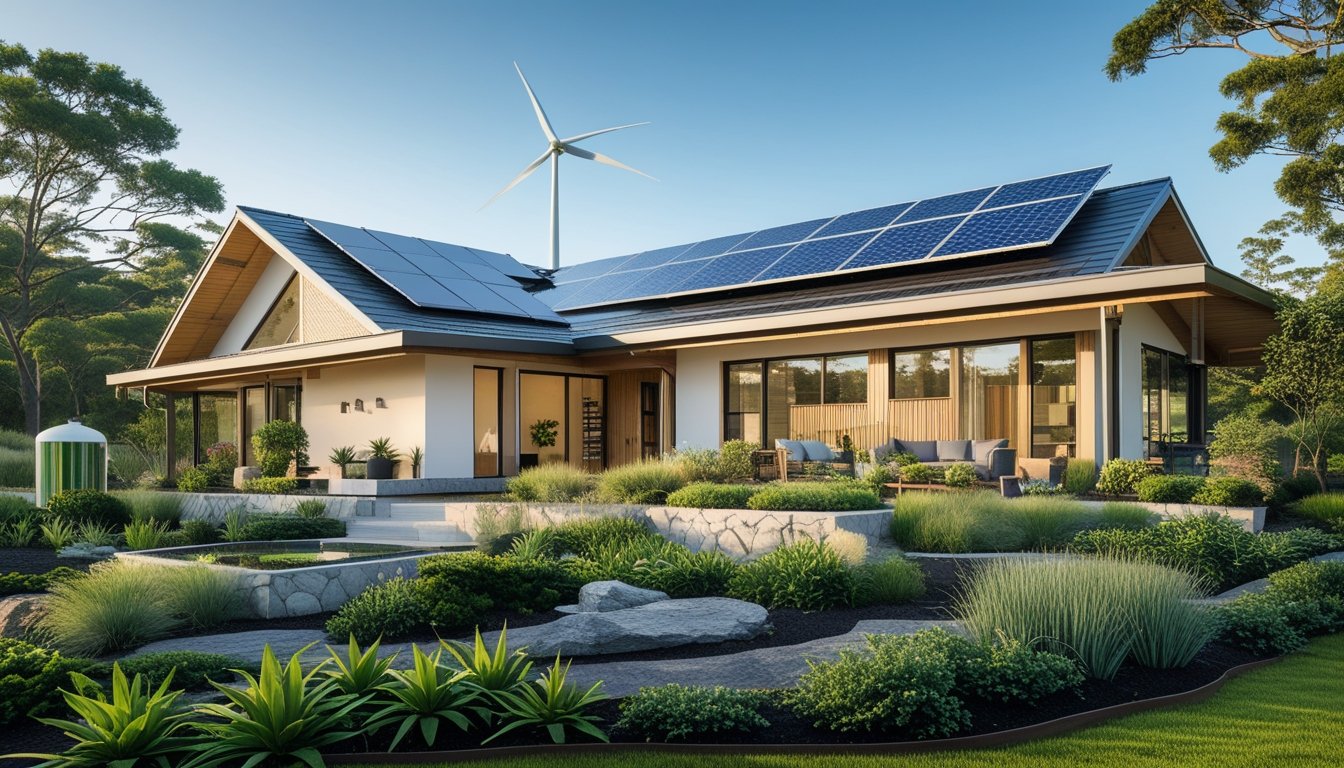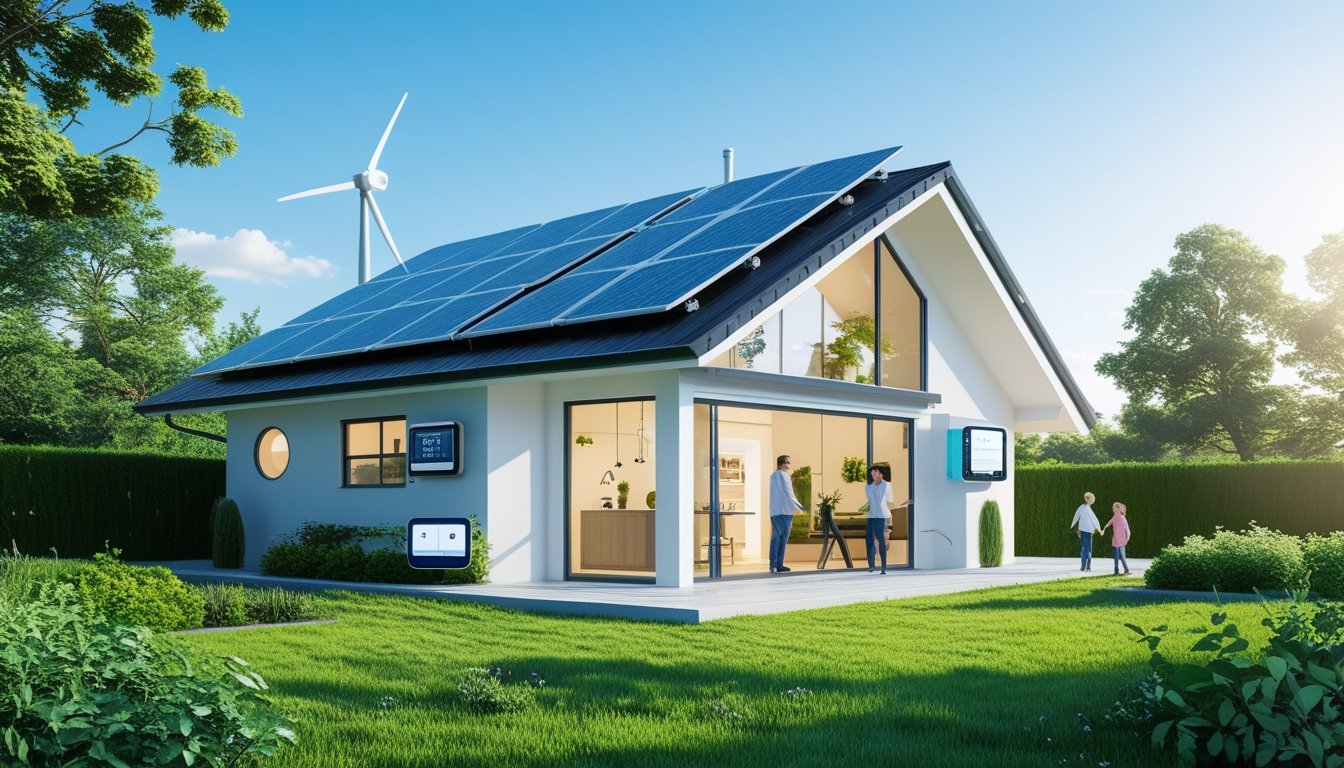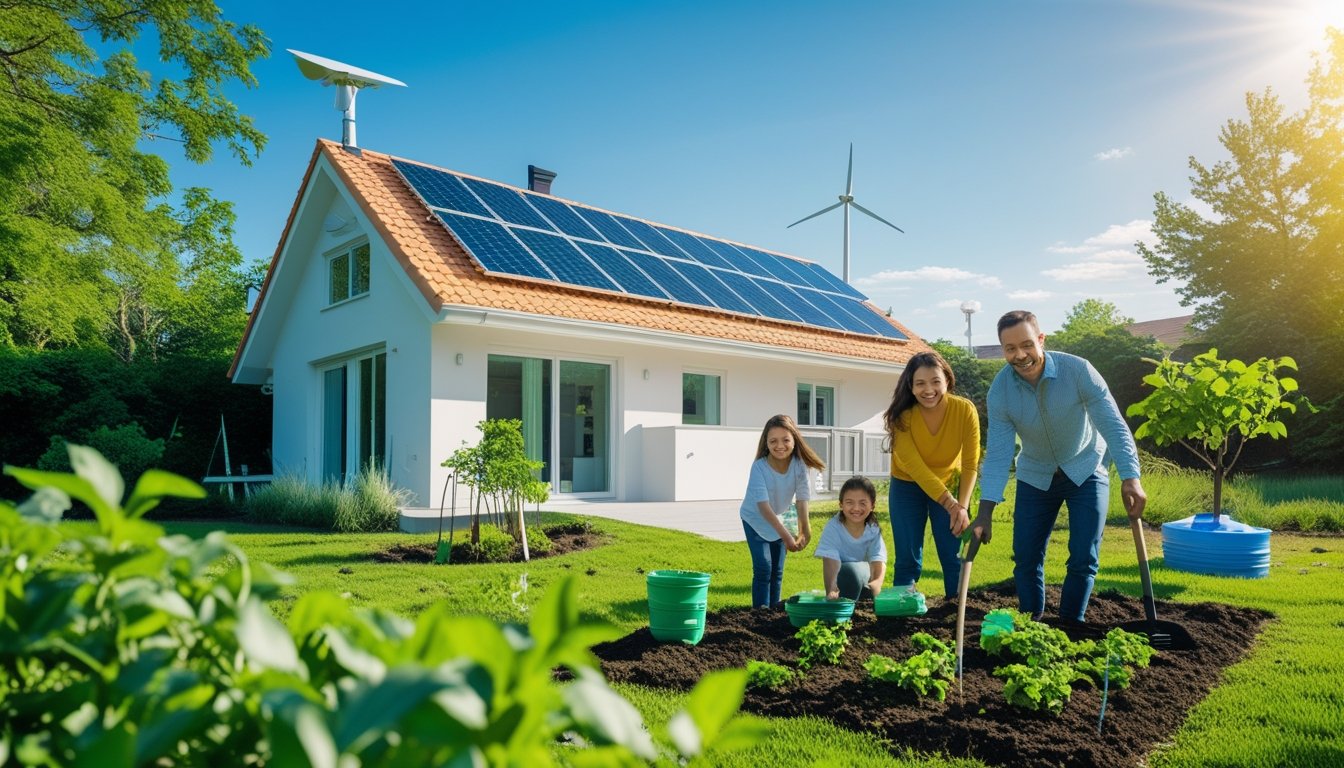Late updated: 26 Aug 2025 13:08
Written by: Sarah Hollister
Creating Eco-Friendly Homes With Renewable Energy: A Guide to Sustainable Living
As green living continues to gain traction globally, the integration of renewable energy systems into our homes has become an essential innovation, offering an eco-friendly approach to modern living. By incorporating renewable energy solutions such as solar panels and wind turbines, we can dramatically reduce our reliance on fossil fuels and lower our carbon footprints. This transformation not only supports environmental sustainability but also enhances the comfort and efficiency of our homes.

The journey towards creating an eco-friendly home doesn't stop with renewable energy. Incorporating smart technology and sustainable building materials can significantly boost energy efficiency. By embracing eco-sensitive practices and integrating features like passive solar design and advanced insulation, homeowners can create living spaces that are not only sustainable but also more cost-effective in the long run.
Visitors seeking to understand the blend of sustainability and innovation will find practical guidance in integrating these green solutions into everyday living. While challenges in adoption may arise, the benefits of a sustainable home environment in promoting a healthier lifestyle and a greener future are well worth it.
Key Takeaways
- Use renewable energy to reduce fossil fuel dependency.
- Smart technology boosts home energy efficiency.
- Sustainable homes improve cost-effectiveness and comfort.
Core Principles of Eco-Friendly Homes With Renewable Energy
Our exploration into eco-friendly homes starts with recognising the significant role of sustainable design, energy efficiency, and locally sourced materials. These principles not only help reduce environmental impact but also promote better living conditions through improved energy efficiency and sustainability.
Sustainable Home Design Fundamentals
Achieving sustainability in home design requires a focus on energy-efficient orientations and using passive solar design techniques. We prioritise maximising natural light and optimising window placement to reduce the need for artificial lighting. Designing roofs with overhangs can provide shading, which reduces cooling demands during hot months.
Indoor air quality can be improved through strategic ventilation systems, promoting a healthier living environment. Adopting practices such as rainwater harvesting further increases resource efficiency. Our goal is to create spaces that harmonise with the environment, reducing the carbon footprint while providing comfort and functionality.
Optimising Energy Efficiency and Insulation
Enhancing energy efficiency starts with addressing insulation and air sealing. We integrate energy-efficient windows which play a critical role in maintaining a stable indoor climate by reducing heat loss and gain. Proper sealing around doors and windows is crucial to prevent air leakage, enhancing the overall energy efficiency of the home.
Using renewable energy sources, like solar panels or wind turbines, reduces reliance on non-renewable energy. Investing in energy-efficient appliances and integrating smart home technologies can further improve energy management, ensuring our homes are not just eco-friendly but also cost-effective over time.
Sustainable and Locally Sourced Building Materials
Building with sustainable and locally sourced materials ensures we minimise the environmental impact while supporting local economies. Materials like reclaimed wood, recycled metals, and concrete alternatives have less embodied energy compared to traditional options. Incorporating these materials helps to maintain a lower carbon footprint.
Furthermore, choosing sustainable materials can enhance durability and reduce maintenance needs over time. Our choices contribute to the overall sustainability of the home, reflecting our commitment to environmental preservation and sustainable living. By prioritising locally sourced materials, the transportation impact on the environment is minimised, aligning our construction practices with ecological conservation principles.
Integrating Renewable Energy and Smart Solutions

In the quest for sustainable living, integrating renewable energy with smart solutions in our homes is essential. This involves harnessing advanced technologies while employing eco-friendly energy sources like solar, wind, and geothermal systems. These innovations not only cut greenhouse gas emissions but also lower energy bills and increase energy independence.
Harnessing Solar Energy and Photovoltaic Panels
Solar energy is a pivotal component in our renewable energy strategy. Photovoltaic panels installed on rooftops convert sunlight into electricity, providing abundant and clean solar power for our households. These panels are efficient and cost-effective, significantly reducing our reliance on non-renewable sources. Additionally, integrating solar power systems with smart home technologies, such as energy-efficient appliances and smart thermostats, optimises energy consumption. This not only minimises utility bills but also supports our broader climate change mitigation efforts. Solar energy is an inexhaustible resource, making it ideal for homes designed to promote sustainability and energy savings.
Utilising Wind Power and Geothermal Systems
In regions with favourable wind speeds, wind energy becomes a valuable asset. Installing small-scale wind turbines can generate sufficient wind power to meet our household needs. The integration of wind energy is particularly effective when combined with other systems, like geothermal systems, which use the Earth's consistent subterranean temperature for efficient heating and cooling. These geothermal systems reduce energy consumption significantly. By employing a mix of renewable energy sources, we enhance our energy independence and resilience. This diversified approach to energy generation aligns with sustainable principles, offering robust solutions against rising energy costs.
Smart Home Systems for Energy Optimisation
Smart home systems are pivotal in efficiently managing our energy use. By incorporating programmable thermostats and energy-efficient appliances, we can closely monitor and adjust energy usage. These systems automate lighting, heating, and cooling, optimising energy consumption based on real-time data. For instance, a smart thermostat learns our routines, adjusting temperatures for comfort and efficiency. This results in substantial energy savings and reduced energy bills. Such systems help us achieve a balance between comfort and energy efficiency, addressing both economic and environmental concerns.
Water Conservation and Sustainable Landscaping
Water conservation is essential in creating an eco-friendly home. Installing rainwater collection systems and low-flow fixtures reduces water waste, supporting sustainable living. Rainwater harvesting systems allow us to collect and store rainwater for various purposes, like irrigation and toilet flushing. Moreover, embracing sustainable landscaping practices, such as xeriscaping with native plants, requires less water and maintenance. This combination minimises our water consumption and carbon footprint. By focusing on water conservation and energy-efficient solutions, we contribute positively to addressing climate change challenges while maintaining a harmonious, efficient home environment.
Frequently Asked Questions

Integrating renewable energy solutions like solar, geothermal, and water systems can transform traditional homes into eco-friendly spaces. With careful planning and maintenance, these innovations improve energy efficiency and environmental impact effectively.
How can one integrate solar panels effectively in residential designs?
To integrate solar panels, consider roof orientation and angle to maximise sunlight exposure. Opt for high-efficiency panels and ensure structural support. Incorporate battery storage systems to utilise energy effectively.
What are the primary considerations when creating an energy-efficient home?
Prioritise insulation and airtight construction to minimise heat loss. Select energy-efficient appliances and install double-glazed windows. Implement passive solar design strategies to enhance natural heating and cooling.
In what ways can geothermal energy be utilised for heating and cooling in homes?
Geothermal energy systems utilise the Earth's stable underground temperature for heating and cooling. Installing ground-source heat pumps is key. These pumps transfer heat in or out of the home depending on the season, improving energy efficiency significantly.
What steps are necessary for converting a traditional home into an eco-friendly one with renewable energy systems?
Begin with an energy audit to identify areas for improvement. Install solar panels or wind turbines where feasible. Upgrade insulation and switch to energy-efficient appliances. Consider geothermal heating systems and implement water-saving technologies like low-flow fixtures.
What are the best practices for maintaining and optimising home renewable energy installations over time?
Regularly inspect and clean solar panels and turbines to ensure efficient operation. Keep mechanical components of geothermal systems well-maintained. Monitor energy outputs and make necessary adjustments to optimise performance. Stay informed about emerging technologies that could enhance existing systems.
How can rainwater harvesting and greywater systems contribute to an eco-friendly and sustainable household?
Rainwater harvesting involves collecting runoff from rooftops for use in irrigation or flushing toilets. Greywater systems recycle wastewater from showers and sinks, reducing freshwater usage. These practices lower water bills and conserve valuable resources.
